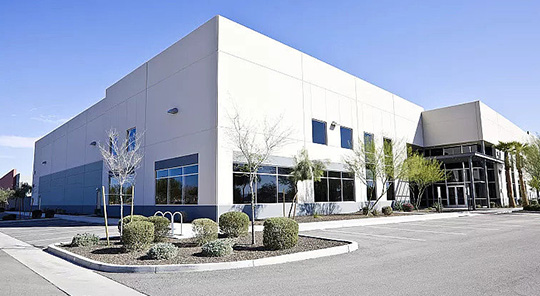
The concept of artificial intelligence was first proposed in the 1950s, more than 60 years ago. However, it was not until recent years that artificial intelligence experienced explosive growth, mainly due to increasingly mature technologies such as the Internet of Things, big data, and cloud computing.
The Internet of Things enables real-time access to a large amount of data, big data provides data resources and algorithm support for deep learning, and cloud computing provides flexible computing resources for artificial intelligence. The organic combination of these technologies drives the continuous development of artificial intelligence technology and has made substantial progress. The human-machine battle between AlphaGo and Li Shishi has pushed artificial intelligence to the forefront, igniting a new wave of artificial intelligence fever.

In the following years, research and applications on artificial intelligence began to flourish everywhere. With the arrival of the intelligent manufacturing boom, artificial intelligence applications have penetrated into various aspects of the manufacturing industry, including design, production, management, and services.
01. Three levels of artificial intelligence technology
Artificial intelligence technology and products have undergone practical testing in the past few years and are currently being applied more maturely, promoting the accelerated integration of artificial intelligence with various industries. From a technical perspective, the industry widely believes that the core capabilities of artificial intelligence can be divided into three levels: computational intelligence, perceptual intelligence, and cognitive intelligence.
1. Computational Intelligence
Computational intelligence refers to the ability of machines to possess super strong storage and super fast computing capabilities, and to conduct deep learning based on massive data, utilizing historical experience to guide the current environment. With the continuous development of computing power and the upgrading of storage methods, computational intelligence can be said to have been achieved. For example, AlphaGo used reinforcement learning techniques to win the world Go championship; E-commerce platforms provide personalized product recommendations based on deep learning of user purchasing habits.
2. Perceptual intelligence
Perceived intelligence refers to the ability of machines to perceive things such as vision, hearing, and touch, to structure unstructured data and interact with users through human communication. With the development of various technologies, the value of more unstructured data is being valued and mined, and perceptual intelligence related to perception such as speech, images, videos, and touchpoints is also rapidly developing. Autonomous vehicles, famous Boston Power Robots, and others utilize perceptual intelligence, which senses the surrounding environment through various sensors and processes it to effectively guide its operation.
3、认知智能
Compared to computational intelligence and perceptual intelligence, cognitive intelligence is more complex, referring to machines that, like humans, have the ability to understand, generalize, reason, and apply knowledge. At present, cognitive intelligence technology is still in the research and exploration stage, such as in the field of public safety, extracting features and analyzing patterns of micro and macro behaviors of criminals, developing artificial intelligence models and systems such as crime prediction, fund penetration, and urban crime evolution simulation; In the financial industry, it is used to identify suspicious transactions, predict macroeconomic fluctuations, etc. There is still a long way to go to push cognitive intelligence into the fast lane of development.
02 Application Scenarios of Artificial Intelligence in Manufacturing Industry
From an application perspective, the application of an artificial intelligence technology may include multiple levels of core capabilities such as computational intelligence and perceptual intelligence. Industrial robots, smartphones, autonomous vehicles, drones and other intelligent products are themselves carriers of artificial intelligence. Their hardware, combined with various software, has the ability to perceive and judge, and interact with users and the environment in real time. They all integrate the core capabilities of various artificial intelligence.
For example, various intelligent robots widely used in the manufacturing industry: sorting/picking robots, which can automatically recognize and grasp irregular objects; Collaborative robots can understand and respond to the surrounding environment; The automatic following material cart can achieve automatic following through facial recognition; With the help of SLAM (simultaneous localization and mapping) technology, autonomous mobile robots can use their own sensors to recognize feature markers in unknown environments, and then estimate the global coordinates of the robot and feature markers based on their relative positions and odometer readings. Autonomous driving technology also integrates various artificial intelligence technologies and algorithms in positioning, environmental perception, path planning, behavioral decision-making and control.

At present, the artificial intelligence technology applied in manufacturing enterprises mainly focuses on intelligent voice interaction products, facial recognition, image recognition, image search, voiceprint recognition, text recognition, machine translation, machine learning, big data computing, data visualization, and other aspects. The following text summarizes the eight commonly used artificial intelligence application scenarios in the manufacturing industry.
Scenario 1:Intelligent sorting
There are many tasks in the manufacturing industry that require sorting. If manual operations are used, the speed is slow and the cost is high, and suitable working temperature environments need to be provided. If industrial robots are used for intelligent sorting, it can significantly reduce costs and improve speed.
Taking sorting parts as an example. The parts that need to be sorted are usually not neatly arranged, and although robots have cameras to see the parts, they do not know how to successfully pick them up. In this case, using machine learning techniques, the robot is first randomly assigned a sorting action, and then told whether the action successfully sorted the parts or grabbed them empty. After multiple training sessions, the robot will know in what order to sort and have a higher success rate; Which position will have a higher success rate in picking up during sorting; Knowing the order of sorting will increase the success rate. After several hours of learning, the success rate of robot sorting can reach 90%, which is comparable to the level of skilled workers.

Scenario 2:Equipment Health Management
Based on real-time monitoring of equipment operation data, utilizing feature analysis and machine learning techniques, on the one hand, equipment failure prediction can be carried out before accidents occur, reducing unplanned downtime. On the other hand, in the face of sudden equipment failures, it is possible to quickly diagnose faults, locate the cause of the fault, and provide corresponding solutions. It is commonly used in the manufacturing industry, especially in industries such as chemical engineering, heavy equipment, hardware processing, 3C manufacturing, and wind power.
Taking CNC machine tools as an example, machine learning algorithm models and intelligent sensors are used to monitor the power, current, voltage, and other information of the cutting tool, spindle, and feed motor during the machining process, identify the force, wear, and damage status of the tool, and the stability status of the machine tool machining. Based on these states, real-time adjustment of machining parameters (spindle speed, feed rate) and machining instructions is made to predict when tool replacement is needed, in order to improve machining accuracy, shorten production line downtime, and improve equipment operation safety.

Figure 1 Prediction of Tool Wear Status Based on Deep Learning
(Source: Professor Li Bin from Huazhong University of Science and Technology)
Scenario Three:Visual based surface defect detection
The application of surface defect detection based on machine vision has become quite common in the manufacturing industry. Machine vision can quickly identify smaller and more complex product defects on the product surface in milliseconds under frequent environmental changes, and classify them, such as detecting whether there are pollutants, surface damage, cracks, etc. on the product surface. At present, industrial intelligent enterprises have combined deep learning with 3D microscopy to improve defect detection accuracy to the nanometer level. For defective products detected, the system can automatically make repairable judgments, plan repair paths and methods, and then perform repair actions by the equipment.
For example, PVC pipes are one of the most commonly used building materials, with a huge consumption. During the production and packaging process, there are many types of defects such as surface scratches, pits, water marks, and rough surfaces, which require a lot of manpower for testing. After adopting visual automatic detection of surface defects, the surface impurities of pipes are automatically detected by setting the minimum and maximum values of area and size, with a minimum detection accuracy of 0.15mm ², The detection rate is greater than 99%; By setting the minimum and maximum values of scratch length and width, automatic surface scratch detection of pipes is carried out, with a minimum detection accuracy of 0.06mm and a detection rate greater than 99%; By setting the minimum and maximum values of wrinkle length and width, fragment length, and color difference threshold, automatic detection of surface wrinkles on pipes is carried out, with a minimum detection accuracy of 10mm and a detection rate greater than 95%.

Figure 2 Surface wrinkling detection of PVC pipes (source: Weishi Zhizao)
Scenario 4:Product quality inspection and fault diagnosis based on voiceprint
Using voiceprint recognition technology to achieve automatic detection of abnormal sounds, identifying defective products, and comparing them with the voiceprint database for fault diagnosis. For example, since the end of 2018, the Faurecia (Wuxi) factory has been fully collaborating with the group's big data scientist team to apply AI technology to the NVH performance evaluation (vibration and noise testing) of seat adjusters. In 2019, the Foggia (Wuxi) factory applied AI technology to the detection of abnormal sounds in the angle adjuster, achieving automation throughout the entire process from signal acquisition, data storage, data analysis to self-learning. The detection efficiency and accuracy far exceed traditional manual detection. With the application of noise detection system based on AI (artificial intelligence) technology in the Wuxi factory, the number of personnel has decreased from 38 to 3, and the quality control ability has significantly improved, with an annual economic benefit of up to 4.5 million RMB.
Scenario 5:Intelligent decision-making
Manufacturing enterprises can apply artificial intelligence technologies such as machine learning, combined with big data analysis, to optimize scheduling methods and enhance decision-making capabilities in product quality, operation management, energy consumption management, and tool management.
For example, the intelligent production management system of FAW Jiefang Wuxi Diesel Engine Factory has functions such as abnormal and production scheduling data collection, abnormal cause diagnosis based on decision trees, equipment downtime prediction based on regression analysis, and scheduling decision optimization based on machine learning. By using historical scheduling decision process data and actual production performance indicators after scheduling execution as the training dataset, a neural network algorithm is used to optimize the parameters of the scheduling decision evaluation algorithm, ensuring that the scheduling decision meets the actual production needs.
Scenario 6: Digital Twin
Digital twins are mirrors of objective things in the virtual world. The process of creating digital twins integrates artificial intelligence, machine learning, and sensor data to establish a "real" model that can be updated in real-time and has a strong sense of the scene, to support decision-making for various activities in the physical product lifecycle. In terms of completing the reduction modeling of digital twin objects, complexity and nonlinear models can be incorporated into neural networks, and a finite objective can be established through deep learning. Based on this finite objective, the reduction modeling can be carried out.
For example, in traditional mode, the fluid and thermal simulation at the outlet of a cold and hot water pipe takes 57 hours per computation using a 16 core server, and after performing a reduced order modeling, each computation only takes a few minutes.
Scenario 7: Creative Design
Generative design is a process of human-computer interaction and self innovation. When engineers design products, they only need to set expected parameters and performance constraints such as materials, weight, volume, etc. under the guidance of the system. Combined with artificial intelligence algorithms, they can automatically generate hundreds or thousands of feasible solutions according to the designer's intentions. Then, they can conduct comprehensive comparisons and select the optimal design solution to push to the designer for final decision-making.
Creative design has become a new interdisciplinary field that deeply integrates computer and artificial intelligence technologies, applying advanced algorithms and technologies to design. The widely used generative algorithms include parameterized systems, Shape Grammars (SG), L-systems, Cellular Automata (CA), topology optimization algorithms, evolutionary systems, and genetic algorithms.

Figure 3 Creative Design of Spokes (Source: Anser Asia Pacific)
Scenario 8:Demand forecasting and supply chain optimization
Based on artificial intelligence technology, establish accurate demand forecasting models to achieve sales forecasting, maintenance and material preparation forecasting for enterprises, and make demand oriented decisions. Meanwhile, by analyzing external data and based on demand forecasting, inventory replenishment strategies are formulated, as well as supplier evaluation and component selection.
For example, in order to effectively control production management costs, Honda in the United States hopes to know when future customer needs will occur. Therefore, a predictive model is established based on customer sales and maintenance data from 1200 dealers to calculate the number of vehicles returning to dealers for repair in the next few years. This information is further transformed into pre prepared indicators for various parts. This transformation has enabled Honda in the United States to achieve a prediction accuracy of up to 99% and reduce customer complaint time by three times.
03. Conclusion
At present, with more and more enterprises, universities, and open-source organizations entering the field of artificial intelligence, a large number of successful AI open-source software and platforms are constantly flooding in, and artificial intelligence is entering an unprecedented explosive period. However, compared with industries such as finance, although artificial intelligence has many application scenarios in the manufacturing industry, it is not outstanding and can even be said to have a slower development.

The main reasons for this are as follows:
Firstly, due to the difficulty in collecting, utilizing, and developing data in the manufacturing process, coupled with the fact that enterprise databases are mainly privately owned and data scales are limited, there is a lack of high-quality machine learning samples, which restricts the autonomous learning process of machines.
Secondly, there are differences among different manufacturing industries, which require high complexity and customization of artificial intelligence solutions.
Thirdly, there is a lack of leading enterprises in different industries that can lead the trend of deep integration between artificial intelligence and manufacturing.
















